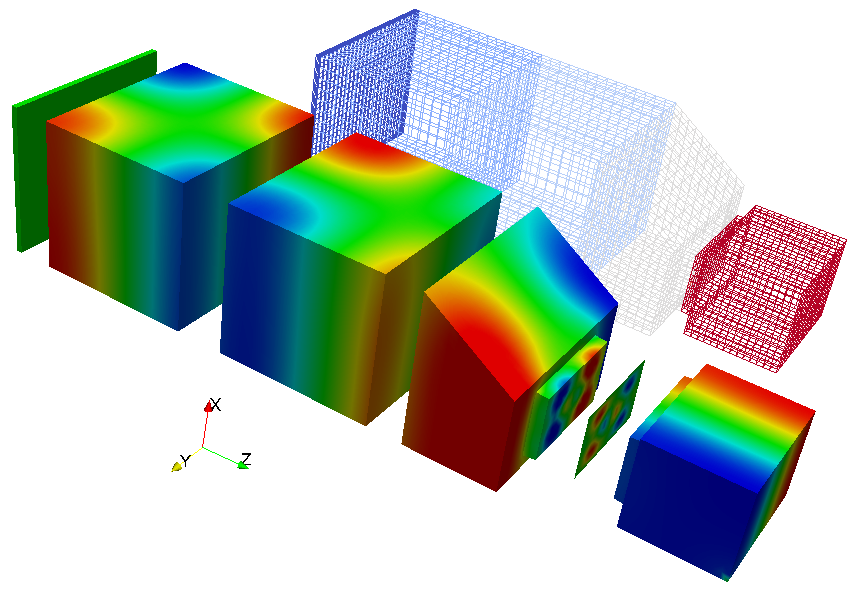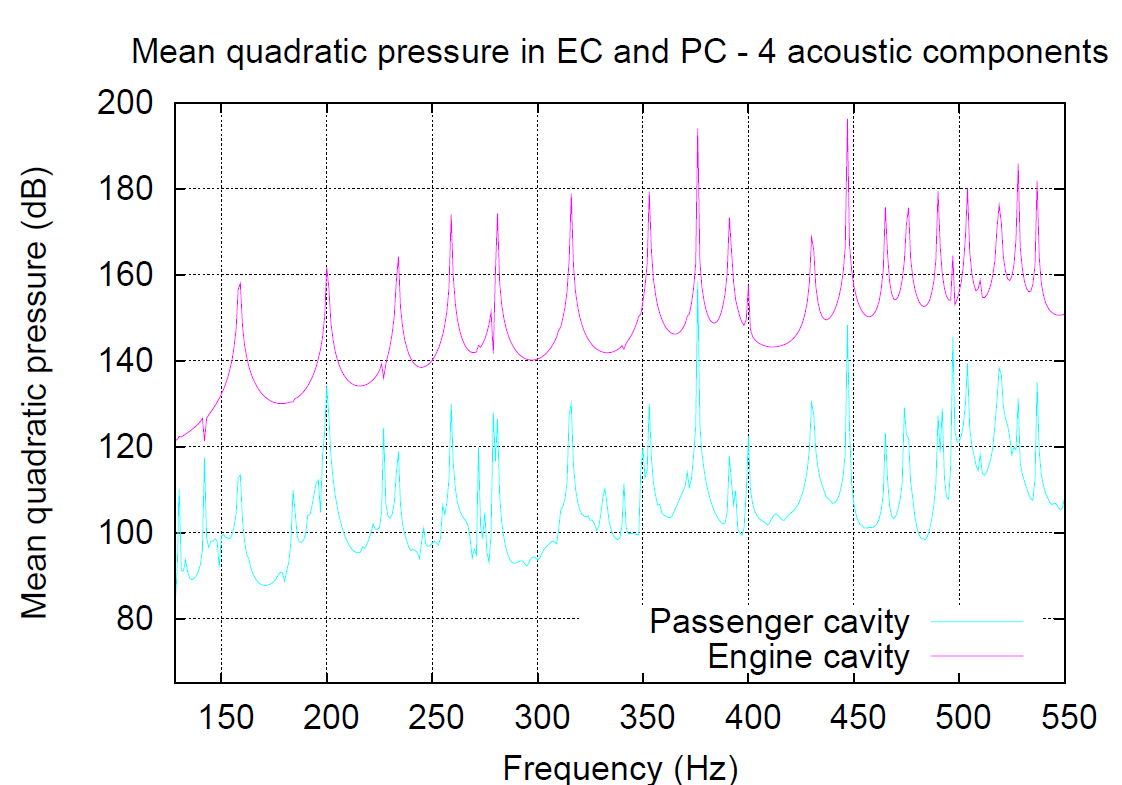Restrained-interface substructuring FE model for reduction of structural-acoustic problems with poroelastic damping
In the context of interior noise reduction for the transport industry, porous materials have been used extensively as passive noise control solutions. The need for optimum price-performance ratio implies optimization in the design process, during which several simulations have to be run. However, numerically expensive modelling of porous material combined with the need for refined structural-acoustic finite element (FE) models can lead to prohibitive size of problems to solve.
In this work, the efficiency of a restrained-interface modal-based reduction technique is investigated, in the scope of structural-acoustic problems with dissipative interfaces. Here, an elasto-poro-acoustic problem is proposed, involving a classic displacement-pressure description of the structural-acoustic domain, while the porous media is described using a 3D model based on the Biot-Allard theory. It implies frequency-dependent porous material parameters, as well as complex arithmetic FE global matrices, thus imposing direct resolution at each excitation frequency for computation of frequency responses. This costly scheme justifies the need for efficient reduced models.
The method is tested on a simplified concrete car model developed by LMS International in Leuven. The concrete car consists of two cavities with rigid acoustic boundary conditions: the passenger compartment (PC) and the engine compartment (EC), connected through a flexible firewall which allows noise generated in the EC to be transmitted to the PC. In addition to that, one wall of the passenger compartment is covered with a porous foam in order to reduce the noise within the cavity.
 Response of the car problem to a unit corner excitation, at f=316 Hz
|
 Frequency response function of mean quadratic pressure
|
After a convergence study, the complete problem (28500 DOFs, 18400 elements) is computed, providing reference Frequency Response Functions (FRF) of the mean quadratic pressure in both the EC and the PC. The same problem is then decomposed in several subdomains, where the proposed transformation is applied, resulting in a reduced problem to solve of approximatively 10600 DOFs (of which 8700 belong to the unreduced poroelastic domain): the computational time is divided by a factor between 2 and 3 for this specific application.
Reference: R. Rumpler, A. Legay, J.-F. Deü, Performance of a restrained-interface substructuring FE model for reduction of structural-acoustic problems with poroelastic damping, Computers & Structures, 89 (23-24), 2233-2248, 2011. doi
